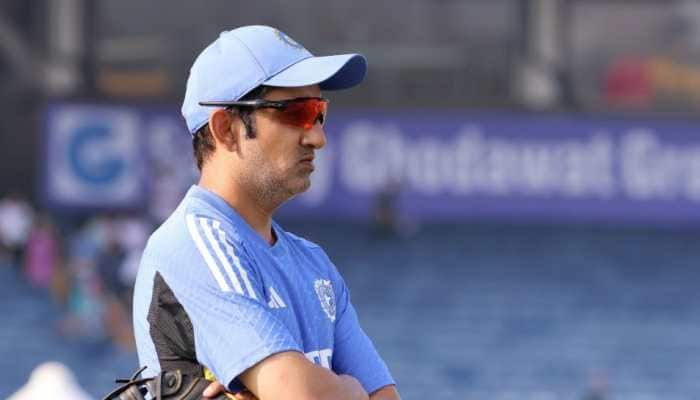There aren't still enough women in IITs, says high-level survey
Women are under-represented in STEM fields in top engineering institutions. But surprisingly, they are well-represented in non-elite institutes.
Trending Photos
)
NEW DELHI: There are still not enough women in Indian Institutes of Technology (IITs) and National Institutes of Technology (NITs), revealed a survey conducted jointly by the All India Council for Technical Education (AICTE) and the Stanford University.
Women are under-represented in STEM (Science, Technology, Engineering and Mathematics) fields in top engineering institutions. But surprisingly, they are well-represented in non-elite institutes.
In a large-scale program to assess and improve the skills of engineering students in India, AICTE along with Stanford University is currently undertaking a three-phased survey in engineering institutes of the country. Based on the survey results, the Centre will introduce changes in technical education in India.
The first two phases are already over. The final phase will be implemented in April 2018 and continue till September 2019.
Here's a quick look at the detailed survey results:
Phase 1 – Pilot Survey (February 2017 – June 2017):
Nearly 5,000 engineering students from 1st, 2nd and 4th years, 600 faculty and 30 department heads participated in the first phase. Based on the results of the expert evaluations and the small-scale pilot study, the instruments were prepared for a large-scale pilot.
Phase 2 - Baseline Survey – June 2017 – April 2018:
In this primary baseline survey, the team implemented and monitored activities in 42 AICTE Approved institutes, 8 Elite Institute (1 IIT and 7 new NITs). Approximately 18,000 engineering students from 1st and 3rd years, along with 3500 faculty and 100 department heads participated. The survey was also conducted in 118 Technical Education Quality Improvement Programme (TEQIP) funded institutes for approximately 27,453 students (1st and 3rd year), 4,300 faculty and 200 department heads. The institutes were randomly selected all over India.
The survey results highlighted the following:
1. Understanding skill levels and gains for different student sub-groups:
- It is important to understand how different student sub-groups are performing within institutions
- Different student sub-groups consisting of Female, SC/ST/OBC, Economically Disadvantaged, and Rural are considered for comparison in Elite and Non-elite institutions.
- This can help the Government to consider targeted policies that reduce disparities and contribute to a more equitable, prosperous society.
2. Female-Male Student Differences
- Females are under-represented in STEM (Science, Technology, Engineering and Mathematics) fields in Elite institution but are well-represented in non-elite institutes. Women students make considerable gains in college in elite and non-elite.
- In Non-elite Institutions (Nationally) female students start out (in year 1) behind male students in quantitative literacy and very small students in amount in physics
- Female and male student differences are essentially the same in year 1 as year 3 (female students are still behind in physics, and a little behind in higher order thinking skills)
3. Socially Disadvantaged (SC/ST/OBC) Students
- India’s system of affirmative action (reservations) is one of the most comprehensive in the world.
- Little is known about the skill levels and gains of social disadvantaged students compared to advantaged students.
4. Socially Disadvantaged versus Advantaged Student Differences in Skill Levels and Gains:
In Elite Institutions (Nationally and TEQIP):
- Disadvantaged students unsurprisingly start out (in year 1) substantially behind in all subjects
- Disadvantaged students make significantly more gains than advantaged students in math, physics, and quantitative literacy from year 1 to year 3. In non-elite institutes, they start to catch up in math, physics and quantitative literacy by year 3.
5. Rural Students
- Despite rapid urbanization, a majority of India’s population (up to 67%) still lives in rural areas
- Many students from rural areas attend colleges in India’s towns and cities
- Due to social, cultural and economic reasons, rural students might learn differently in college than their urban counterparts
- Understanding learning outcomes of rural students could help address the needs of this large and significant section of India’s youth
6. Rural versus Urban Student Differences: Takeaways
- In Year 1, rural students start out behind (in all skills) urban students in both the National and TEQIP samples
- While rural students remain behind urban students in Year 3, they sometimes make more gains than urban students (depending on the exam and institution type) and never fail to make at least equal gains.
7. Economically Disadvantaged (Low Ses-Socio Economic Status) Students:
In elite institutions
- Low SES students unsurprisingly start out substantially behind in all subjects in 1st year
- Low SES students make significantly more gains than High SES students in physics from year 1 to year 3 in both nationally and in TEQIP colleges. Students in TEQIP colleges also make significant gains in maths and quantitative literacy.
- Unsurprisingly, low SES students remain behind in all skills by year 3
Stay informed on all the latest news, real-time breaking news updates, and follow all the important headlines in india news and world News on Zee News.
Live Tv







)
)
)
)
)
)
)
)
)
)
